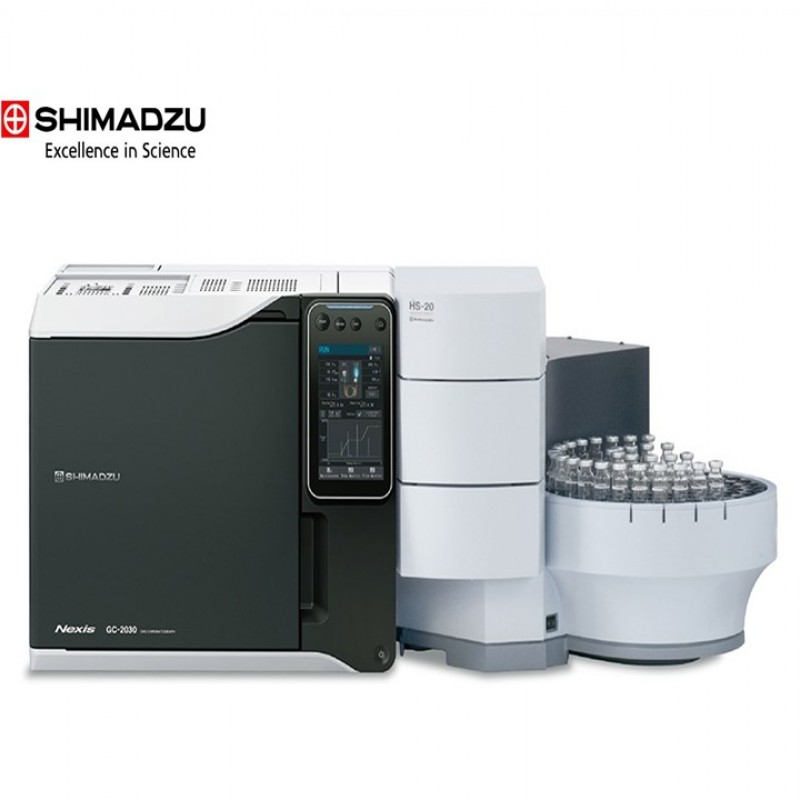
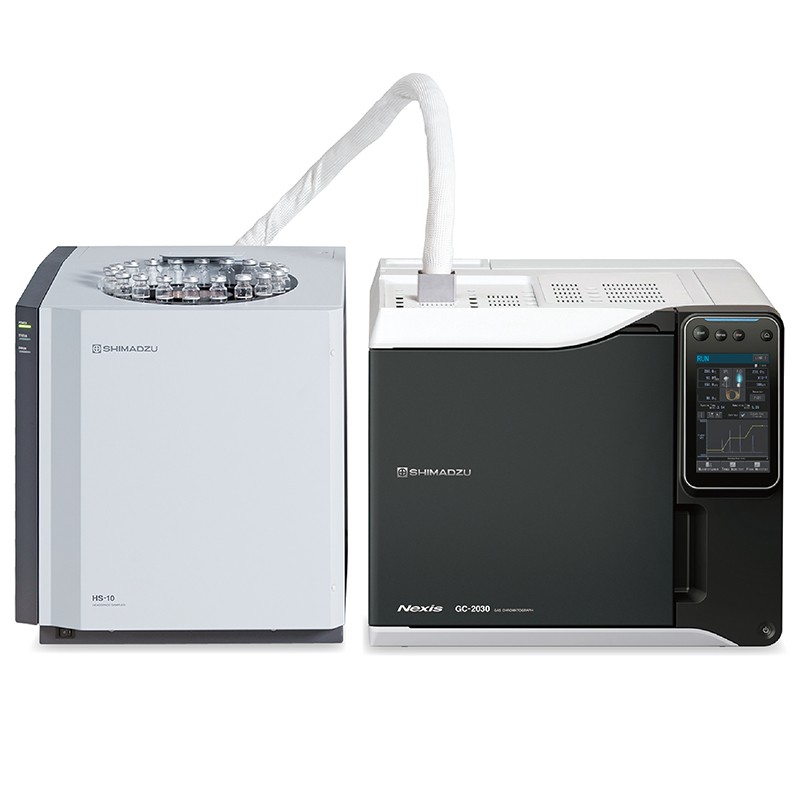
Shimadzu HS-20 and HS-10 series headspace systems are ideal solutions for volatile compound analysis such as VOC, residual solvent, aroma, fragrance and alcohol, which are performed with GC and GCMS systems.
| Functions / Models |
HS-20
|
HS-10
|
| Sample capacity | 90 | 20 |
| Temperature | Up to 300 oC | Up to 225 oC |
| Trap and low temperature options | HS-20 Trap and HS-20LT Models | - |
| Vial mixing | 5 steps | 3 steps |
Favorable area reproducibility can be obtained, thanks to high-accuracy flow rate control by electronic flow controllers (AFC and APC), and a thermostatic vial chamber with a uniform temperature distribution.
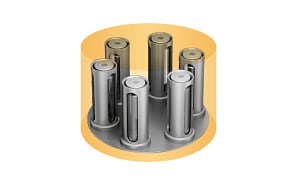

Residual solvents in pharmaceuticals are strictly controlled, and are categorized as Class 1 to Class 3 depending on the risk they pose to human health. The headspace GC method prescribed in USP<467>is utilized for the analysis of residual solvents. Class 1 Procedure A requires a S/N ratio ≥5 for 1,1,1-trichloroethane and a S/N ratio ≥3 for all peaks, while Class 2A requires a resolution ≥1.0 for acetonitrile and methylene chloride. The HS-10 satisfies all of these requirements.

This is an example of the analysis of 10 μg/L (10 ppb) VOCs in water using the HS-10 and an ECD. The VOCs in water can be measured with excellent reproducibility due to the high thermal stability of the HS-10.
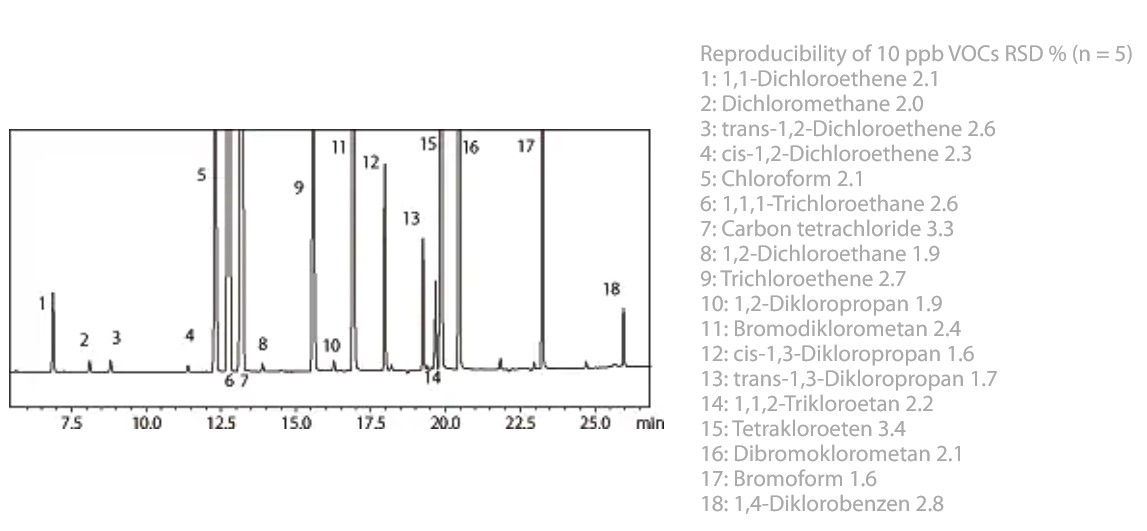
The analysis of alcohols in blood is frequently performed in the fields of forensic medicine and emergency medicine. It is utilized to determine the level of drunkenness from alcohol ingestion, to evaluate criminality, and to distinguish alcohol ingestion from other medical cases. These measurements must be performed quickly and with high accuracy, demands that can be met by headspace GC.

During a GC analysis, the HS-10 will take the next vial and move it to the vial heater. There, it can incubate for a specified time and be ready for injection when the previous analysis cycle has ended.

The HS-20 series is the optimal solution for volatile component analysis. Its superior performance, user-friendly design and 90 vial capacitied tray support all types of analyses, from research to quality control. The HS-2* sample tray is 20 cm higher thn the desk, enabling it to be seen at all the times. This makes sample placement easy.
In addition, 10 mL and 20 mL vials can be placed and analyzed simultaneously without the need for special attachments.
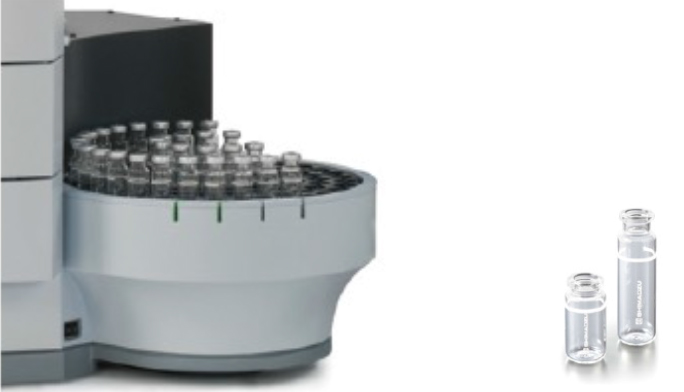
High reproducibility and low carry over ensure reliable quantitation. In addition, an oven with maximum temperature of 300°C enables analysis of high-boiling compounds.
Loop type, trap type (absorbent trap) and long transfer line options are available. The optional barcode reader enables samples to be controlled via a chromatography data system.
The HS-20 Series Headpsace achieves high reproducibility through both high-accuracy flow rate control via pneumatic flow controller (Advanced Flow Control: AFC system) and a mechanism that allows sample vial to enter the oven from the bottom.
Consequently, this system minimizes heat loss, and maintains high thermal stability during overlap analysis.
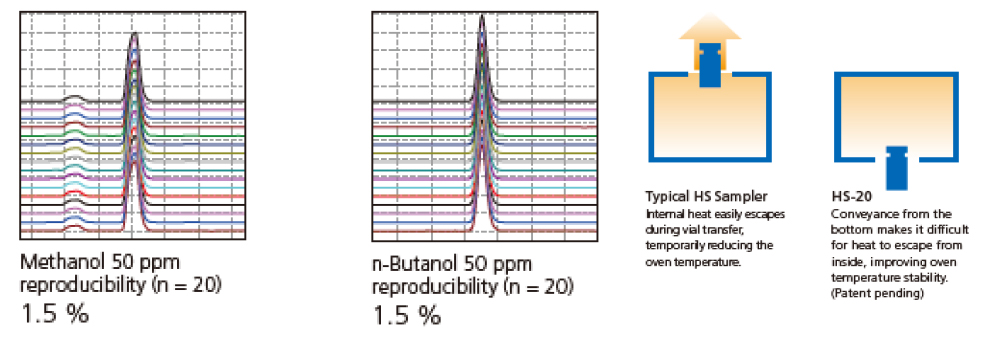
Keeping the sample line inert and as short as possible results in extremely low carry over. No residue is left, even with acetic acid and other polar compounds, enabling high reliable analysis. (Patent pending)

Styrene is considered as possible human carcinogen by the WHO and International Agency for Research on Cancer (IARC). Migration of styrene from polystyrene cups containing beverages has been observed. The objective of this study is to develop a sensitive, selective, accurate and reliable method for styrene determination using GCMS-HS to assess the risk involved in using polystyrene cups.
Instrument: Shimadzu GCMS-QP2010 Plus Gas Chromatograph Mass Spectrometry System (GCMS) coupled with HS-20 Headspace Sampler
Particularly in judicial cases, the amount of alcohol and foreign substances in the human blood should be calculated as promil. The purpose of this study is to analyze the blood alcohol level using a gas chromatograph and headspace method.
Instrument: Shimadzu GC-2010 Plus Gas Chromatograph with Headspace Unit (GC-HS)